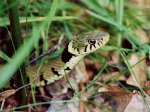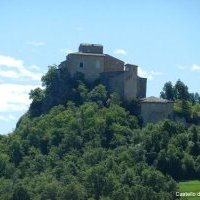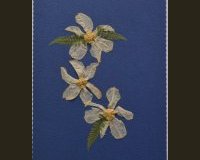accueil site > 45. Archives > Paysage et patrimoine > 01. Teaching materials > 03. Secondary school > Life in the Garden : how to classify living beings ?
-
45. Archives
-
Paysage et patrimoine
-
01. Fiches pédagogiques
Disciplines
-
01. Teaching materials
Disciplines
-
02. Jardin sans frontière : une école pour développer les compétences -clés en Europe
- 04. Partenaires
- 05. Rencontres transnationales
- 14. À l’école du jardin. Mobilités de formation dans les jardins d’Europe
- 15. À l’école européenne du jardin. Paroles de formateurs sur leurs formations "entre pairs"
- 16. A l’école auropéenne du jardin. Paroles d’apprenants sur leurs mobilités Erasmus+
- 19. Petit glossaire "européen" du jardin
- 20. Dissémination
- 21. Exploitation locale du projet
- 03. Un nouvel Erasmus+ : Le bleu européen comme étendard contre l’exclusion des adultes
-
09. Erasmus+ partenariato
-
Cammini del Blu in Europa
- 01. Incontri transnazionali
- 05. Progetti blu di partners
- 10. Percorsi europei del Blu
- 20. Storie blu
- 40. Disseminazione
- 43. Transcultural Carpet Blue
- 45. Missive blu
- 46. Glossario blu
- 47. Schede didattiche "Pedagogia del colore blu in Europa"
- 48. Illustrazioni delle schede didattiche : Mostra delle opere degli studenti
-
Giardino senza frontiere. Una scuola per lo slivuppo di competenze chiave in Europa
- 04. Partners
- 05. Riunioni transnazionali
- 14. Alla scuola del giardino. Mobilità di formazione nei giardini d’Europa
- 15. Alla scuola del Giardino. Parole di formatori sul loro addestramento "tra pari"
- 16. Alla scuola del giardino. Parole dei discenti sul loro Erasmus + Mobilità
- 19. Piccolo glossario europeo del giardino
-
Cammini del Blu in Europa
-
11. Erasmus+ Partnership
- 01. Transnational Meetings
- 05. Blue Projects of partners
- 07. European roads of the Blue
- 10. Blue stories
- 40. Dissemination
- 43. Transcultural Carpet Blue
- 45. Blue Missives
- 46. Blue Glossary
- 48. Roads of the blue : the file
- 50. Illustrations of the pedagogic file : exhibition of works of learners
-
51. Garden Without Borders : A School for Developing Key Competences in Europe
- 04. Partners
- 05. Transnational meetings
- 14. At Garden School. Training mobilities in the gardens of Europe
- 15. At Garden School. Words of trainers on their "peer-to-peer" training
- 16. At Garden School. Learners’ words about their mobility Erasmus +
- 19. Small European glossary of the garden
- 20. Dissemination
-
11. Partenariats Erasmus+
-
01. Les chemins du bleu en Europe
- 01. Rencontres transnationales
- 05. Projets bleus des partenaires
- 10. Routes du Bleu en Europe ...
- 20. Histoires Bleues
- 40. Dissémination
- 43. Transcultural Carpet Blue
- 45. Missives bleues
- 46. Glossaire bleu
- 47. Formation pédagogique : fiches pédagogiques et référentiel de compétences clés et transversales
- 50. Illustrations des fiches pédagogiques : exposition des travaux des apprenants
-
01. Les chemins du bleu en Europe
- 12. Pedagogic tools
- 17. Fiches pédagogiques
- 17. Schede Pedagogiche
-
01. Fiches pédagogiques
- 05. Livre d’or des formations
- 07. Livre d’or des formations Comenius - Grundtvig
- 10. National
- 20. International
-
Paysage et patrimoine
Life in the Garden : how to classify living beings ?dimanche 21 septembre 2008
 Life in the Garden : how to classify living beings ?
Life in the Garden : how to classify living beings ?
NOTIONAL OBJECTIVES :
To know living beings can be grouped according to various criterions, some of which allowing a classification.
METHOD OBJECTIVES :
![]() to use a microscope
to use a microscope
![]() to classify the animals and plants collected or observed, using the classification criterions.
to classify the animals and plants collected or observed, using the classification criterions.
MATERIALS :
![]() animals and plants collected during an outing in the garden
animals and plants collected during an outing in the garden
![]() Berlese funnel [1] (cf. description in the sheet)
Berlese funnel [1] (cf. description in the sheet)
![]() Photos of animals and plants to be classified
Photos of animals and plants to be classified
PROCEDURES :
Beforehand : organise an outing in the garden. Collect humus beneath trees.
Back in the classroom, use the Berlese funnel to collect the micro-fauna (spiders, centipedes, insects…)
1. Define the notion of criterion
After having collected animals, suggest to the pupils to search criterions allowing the animal classification. Take insects as an example.
Observe with the microscope the animals collected and classify them into two groups : “insect" and “non-insect", trying to approach the notion of criterion used to classify them. Share the different propositions. Confront the children’s choices so as to end with the best criterion (three pairs of legs).
2. Classify the animals
Observe photos of animals. Use the listed criterions to put their names in the classification table. Work with the following list : birds, fishes, reptiles, insects, amphibians, mammals, worms, shellfishes, molluscs, arachnids, centipedes.
Which group does this animal belong to ?
Cf Table 1
Then bring in other animal groups (that do not belong to the garden environment) : jellyfish, sponge, and modify the table.
3. Classify the plants
Classify the garden plants using the same process.
After having collected a large panel of plants from the garden, suggest the children to search criterions allowing them to classify the plants.
Use the criterions listed by the pupils to build a classification table from the following list : moss, alga, fern, flower plants, conifer, lichen, and mushroom (mention that the scientists do not consider anymore mushrooms as plants).
Which group does this plant belong to ?
Cf Table 2
ASSESSEMENT :
Capacity for the pupil to classify other living beings using classification criterions.
1- Device formed principally by a sieve and a light source that allows the ground micro-fauna to be collected.
Auteur : Jean-Michel Josse professeur de Sciences de la Vie et de la Terre, Lycée Français Charlemagne de Pointe Noire, Congo Brazzaville


















 Version imprimable
Version imprimable